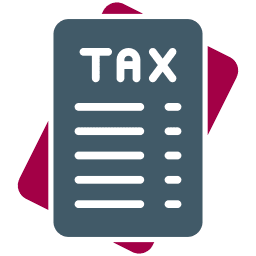How Can We Help
Contact us to find out how TRW Accountants can help you with your accounting needs.
Providing Independent Financial Advice In Lancashire
A Guide to Pensions for Small Business
We’ve talked quite a bit about setting up payroll and adding new employees to it already, but there are so many related topics when it comes to your payroll obligations as a small business owner. Recently we received a series of questions about pension schemes, and as this is quite a confusing topic we wanted to put together a little guide.
As always with our guides, if you’re at all concerned that yours may be an edge case, we recommend you get in touch and we’ll see how we can help with your specific situation.

Providing Independent Financial Advice In Lancashire
What’s the Minimum Number of Employees to Provide a Pension?
The simplest answer of all: One. As soon as you have one eligible employee, you have to enrol them into a pension scheme. This almost always includes paying employer contributions into their pensions – if they earn £6240 or more per annum, you must pay; below that threshold it’s optional.
Ideally, the pension should be set up before they first start working for you.
Which Employees Aren’t Eligible for Pensions?
The test for pension eligibility is a two step test, and employees must be enrolled in a pension scheme if they fit either criterion – they are only non-eligible if neither are true.
You must auto-enrol any employee between the age of 22 and 66 (the state pension age).
You also need to auto-enrol any employee earning more than £10,000 per year.
And if someone who isn’t automatically eligible asks to be put into a pension scheme, one must be set up by them.
What Do I Have to Do for Employees Outside the Pension Scheme?
As well as enrolling any ineligible employees who ask, it’s also your responsibility to monitor eligibility; keep track of their age and earnings, so that you won’t be caught out.
You should also inform any non-eligible employees, in writing, about when they will become eligible and what will happen when they do. This should be done within six weeks.
You will also need to carry out a declaration of compliance and submit this to the Pensions Regulator. They have a guide online for doing this, which can be found here at the time of writing.

Providing Independent Financial Advice In Lancashire
What Do I Tell My Employees?
Just as you need to inform non-eligible employees of the way they will become eligible, eligible employees need to be told, in writing, what it means for them. Many pension providers will do this on your behalf as part of the service, but there are also templates available from the Pensions Regulator.
How Much Will I Be Contributing?
Currently the legal minimum contribution to the pension scheme is an equivalent of 3% of their qualifying earnings between £6240 and £50,270 per annum. These figures undergo annual review by the government, so it’s always worth checking the current boundaries.
Qualifying earnings aren’t just salary. They also include any commission earned or bonuses paid, as well as any overtime. Statutory pay for maternity, paternity, adoption, and sick leave is also calculated.
The employee will be paying 5% based on the same calculation.
Many UK businesses pay more than 3%, with matching the 5% figure for the employee being a common tool for larger businesses looking to retain employees; this is less common for smaller businesses, of course, where budget control is more important.
When Do I Pay?
Contributions must be paid by the 22nd of the month following the paycheque. As part of our payroll process, we calculate and deduct contributions, and ensure you know what must be paid to the scheme in a timely fashion.

Providing Independent Financial Advice In Lancashire
Talk to Me About Pension Tax Relief
Taxpayers earn relief on the tax that would have been owed for their pensions, with that money remaining in the pension scheme.
This tax relief is paid based on the highest rate of income tax paid. So if you’re a basic rate taxpayer, you receive 20% relief on your pension; higher-rate taxpayers can claim 40%, and additional-rate taxpayers can claim 45%.
There is a cap on this tax relief – the pension annual allowance. Currently this is £60,000 (or 100% of your income if you earn less than £60,000).
It’s worth remembering here (especially for company directors) that this allowance is calculated only on salary, not on dividends.
Should I Set Up a Pension Scheme as a Self-Employed Individual?
This isn’t a question a guide can fully answer. You’re not required to set one up; on the other hand, saving for retirement.
However, there are many different ways you could do this – including paying into a company pension set up while you were employed previously, setting up a company pension scheme for your own business (ready to expand once you have employees), or paying into some other long term investment.
We would recommend consulting a specialist advisor who can confirm what will work best for your specific circumstances in this case.
If you have any questions about company pension schemes or any other aspect of payroll, please do contact us for support.

Professional Accounting And Financial Advice
Contact TRW Accountants
Address:
TRW Accountants
95 King Street
Lancaster, LA1 1RH
Contact Details:
Tel: 01524 64187
Fax: 01524 60029
Email: office@tr-w.co.uk
Registered in England and Wales. Registered office – as above. Company registration 03851905




